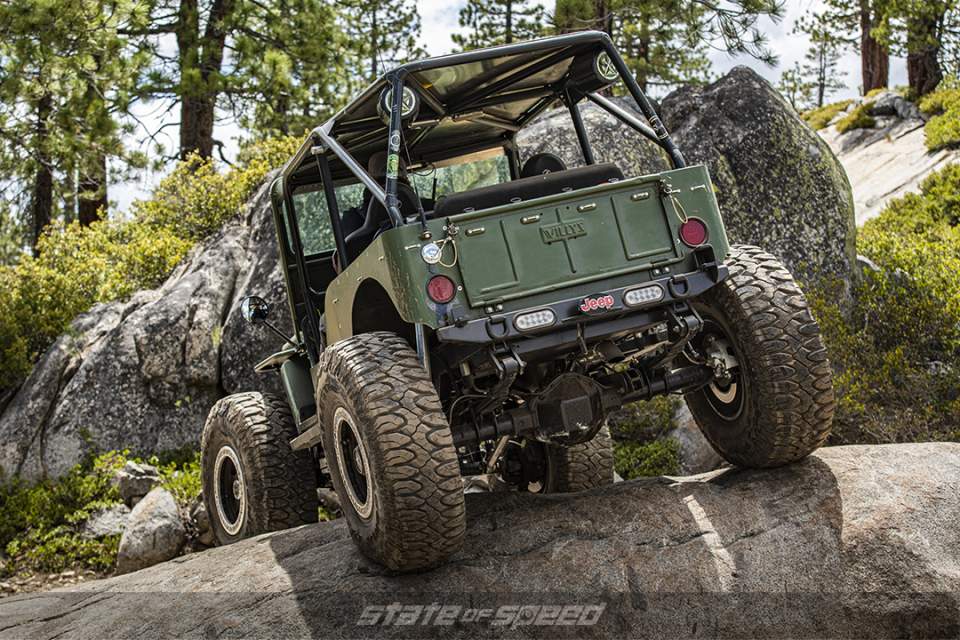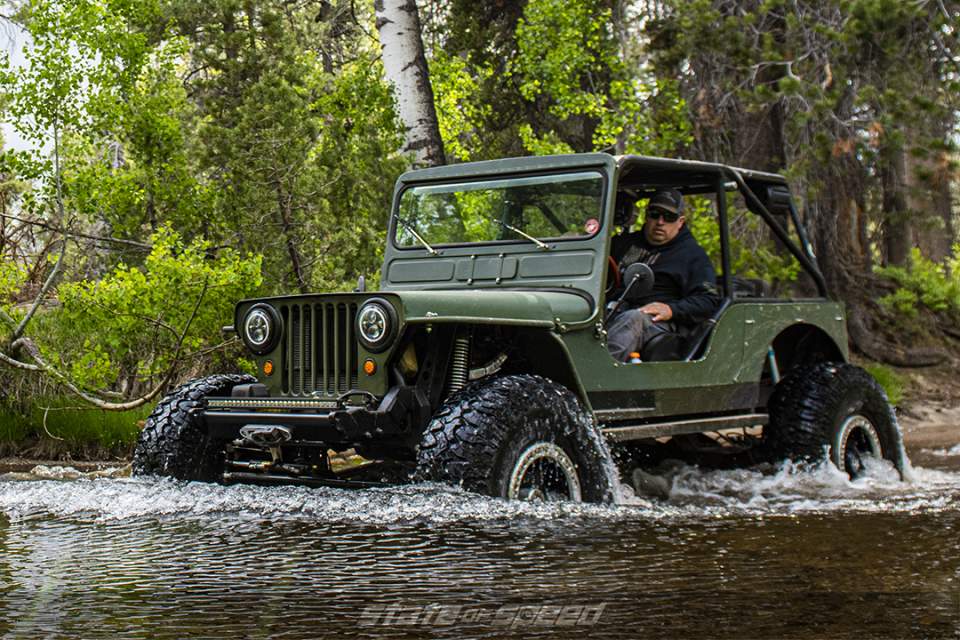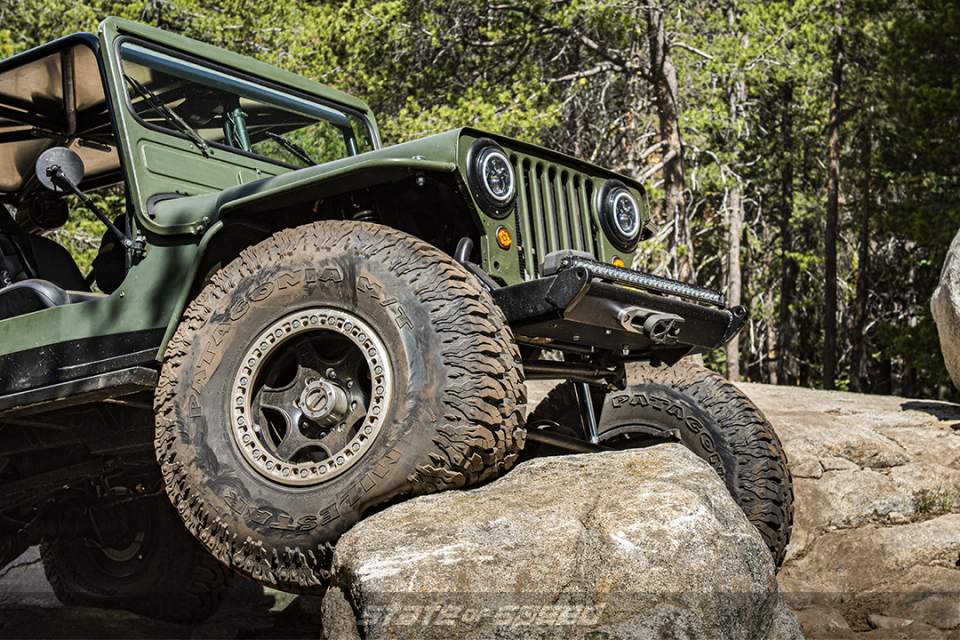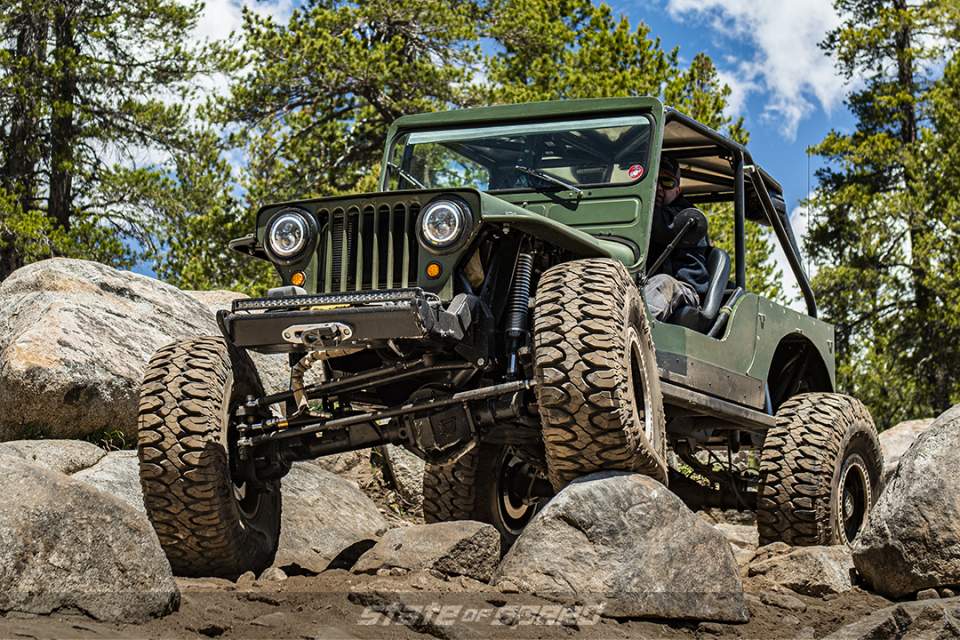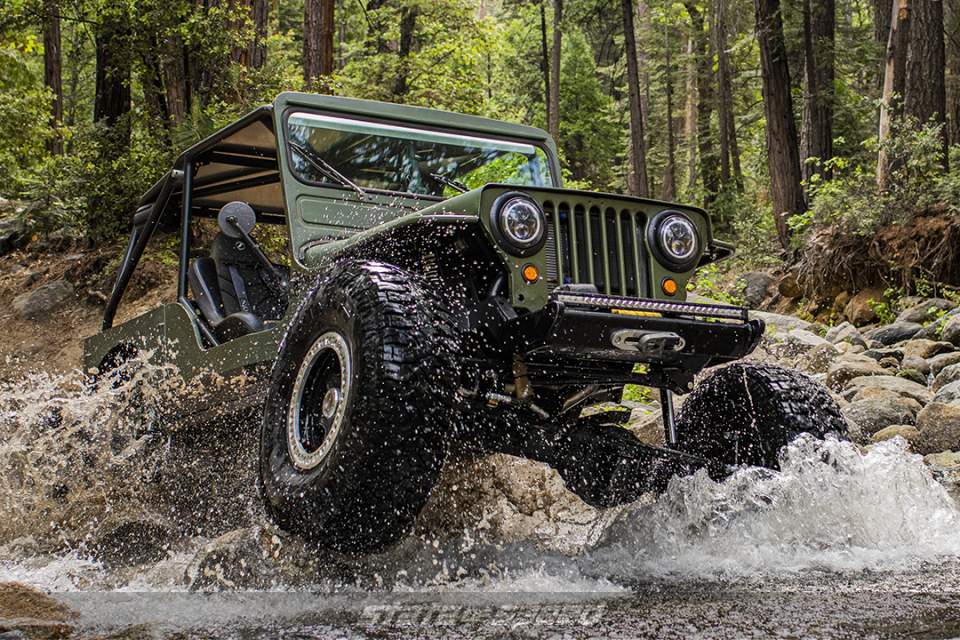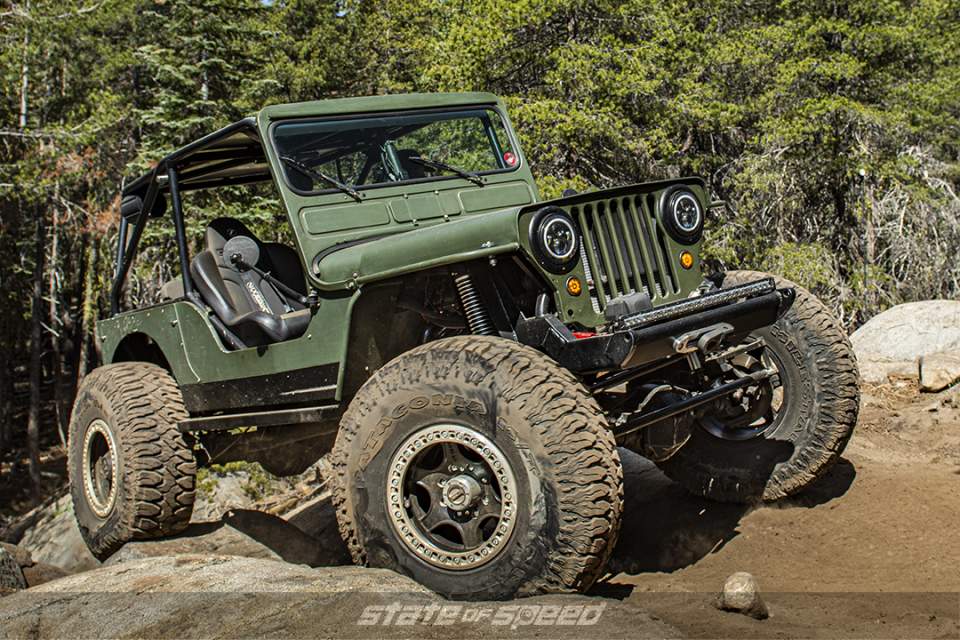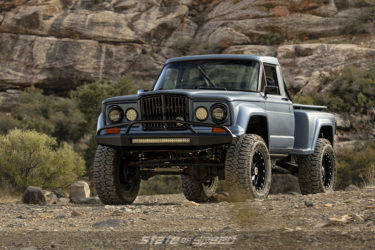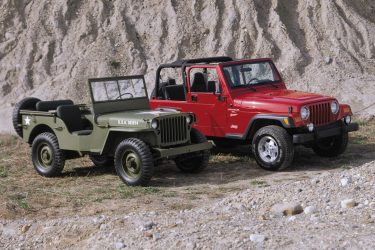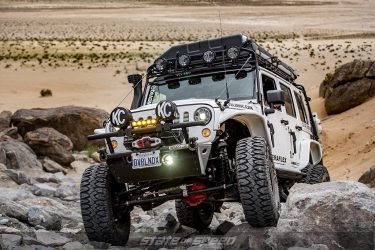The Birth of An Industry: ’46 Jeep Willys
Originally built out of necessity at the start of WWII, the Willys MB, nicknamed the Jeep, soon became one of the G.I.’s most beloved forms of transportation. The tough, versatile, and reliable little 4wd served in every theater of the war from the deserts of Africa to the jungles of the South Pacific. With the war drawing to an end and the contract to the government ending with it, the manufacturer felt that they could evolve production and offer the Jeep to the civilian market as a light duty tractor.
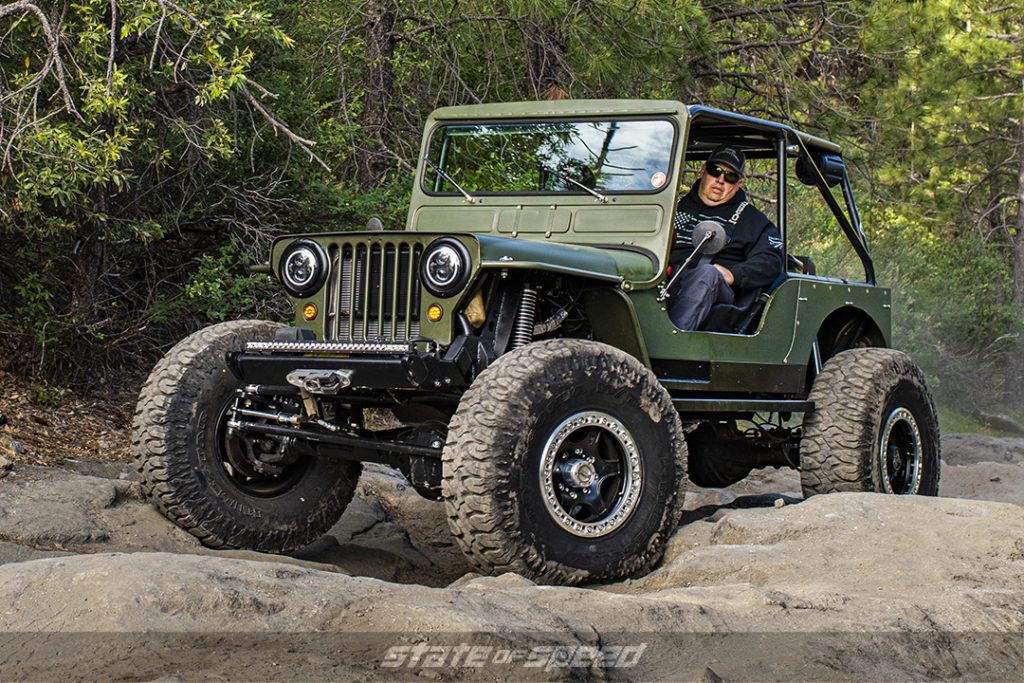
Tires: Milestar Patagonia M/T – 40×13.50R17 LT
Rebadged the CJ2A, the Jeep was offered with the option of a power take off gear box and a host of farm or construction implements. What the people at Willys didn’t foresee was the level of interest the returning soldiers had in owning a version of the Jeep they had grown to love, to use as a recreational vehicle. No sooner than they started buying them did the owners start altering them. Whether it was to personalize them or modify them to increase their off-road capability, the civilian Jeep and its military counterpart would give birth to an entire industry that still exists to this day.
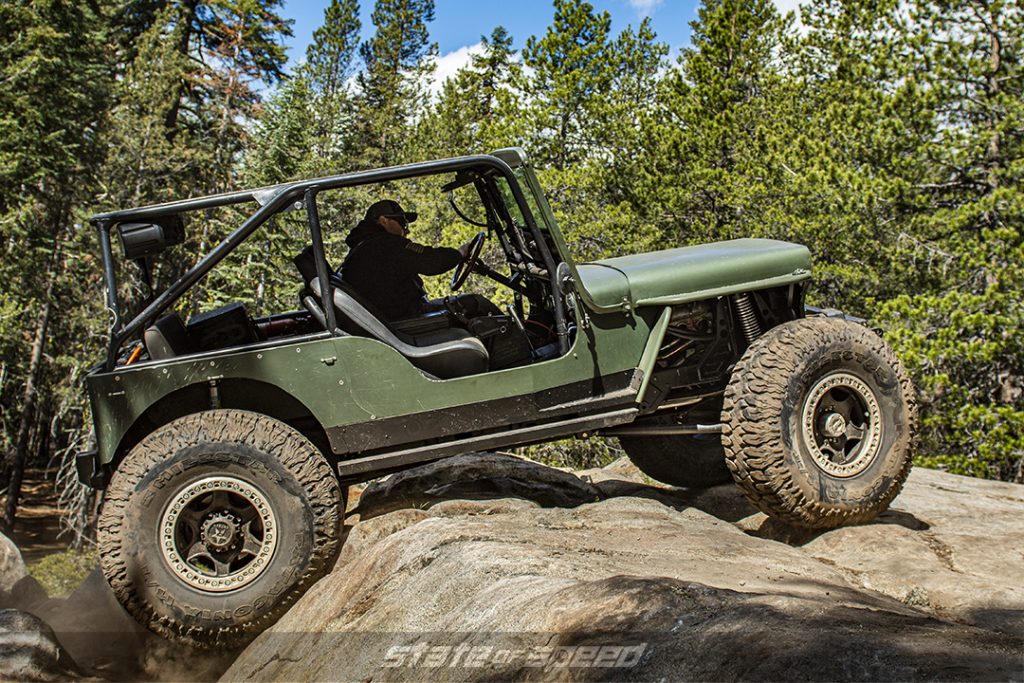
Tires: Milestar Patagonia M/T – 40×13.50R17 LT
…the civilian Jeep and its military counterpart would give birth to an entire industry that still exists to this day...
…the civilian Jeep and its military counterpart would give birth to an entire industry that still exists to this day...
77 years after the Jeep first hit the civilian market, the original CJ2A’s are still as popular with off-road enthusiasts as ever. Whether it’s restored to original, pulled out of retirement and returned to the trail, or completely custom built, the early Jeeps, now more affectionately known as flat fenders due to their distinct front fender design, have become one of the most iconic vehicles in the off-road industry.
When Rodney Hendrix of Murphys, California set out to build a vehicle capable of transporting him and his gear to remote hunting sights in the Sierra Nevada Mountains, he chose to base it off of the beloved flat fender. A derelict 1946 CJ2A was pulled from a field near his home and the process of building began.
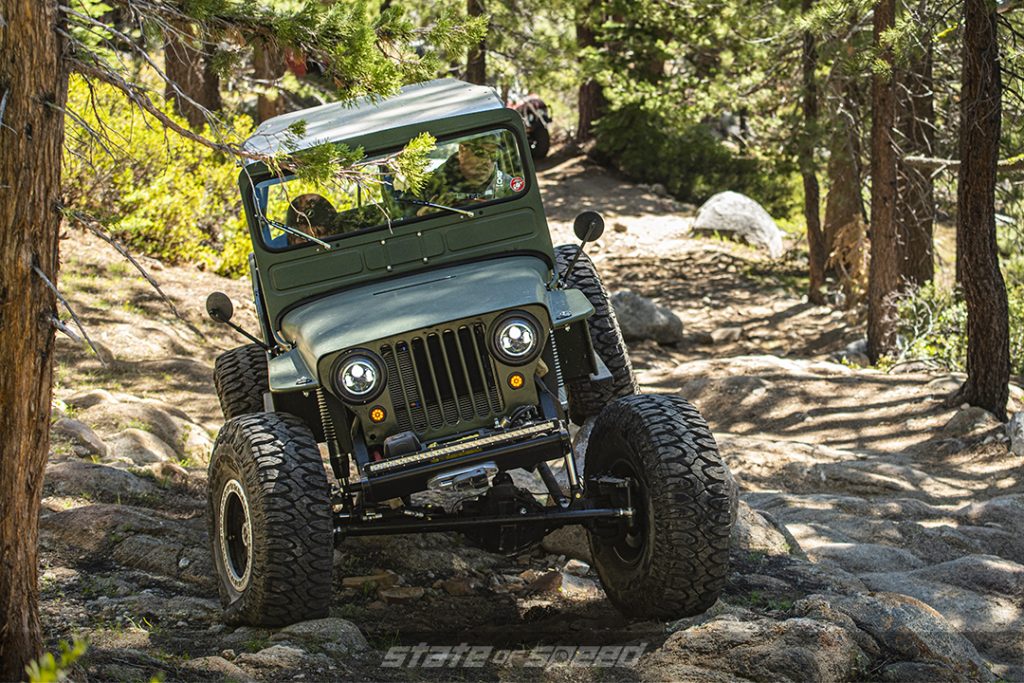
Tires: Milestar Patagonia M/T – 40×13.50R17 LT
You can’t properly build anything without a solid foundation so that’s where Rodney began. While adequate for the original vehicle, the factory C channel frame is not the strongest design. Another drawback with the original is its rather short 80” wheelbase. To remedy both issues at once, working out of his home garage, Rodney built himself a new frame from 2”x3”x .1875” tubing. During fabrication of the new frame Rodney elected to stretch the wheelbase out to 104”. Originally built with front and rear leaf springs locating a Dana 44 front, 9” Ford rear axle combo, the Jeep is currently running GM 1-ton axles. Gone are the front leaf springs and in their place, is a custom 3-link suspension with 14” ORI struts. The front Dana 60 is stuffed with 4.88 gears and a Lock-Right locker. Steering is controlled by a Saginaw box that was drilled and tapped by Rodney before being plumbed to a single ended hydraulic ram in order to create a simple hydro assist setup.
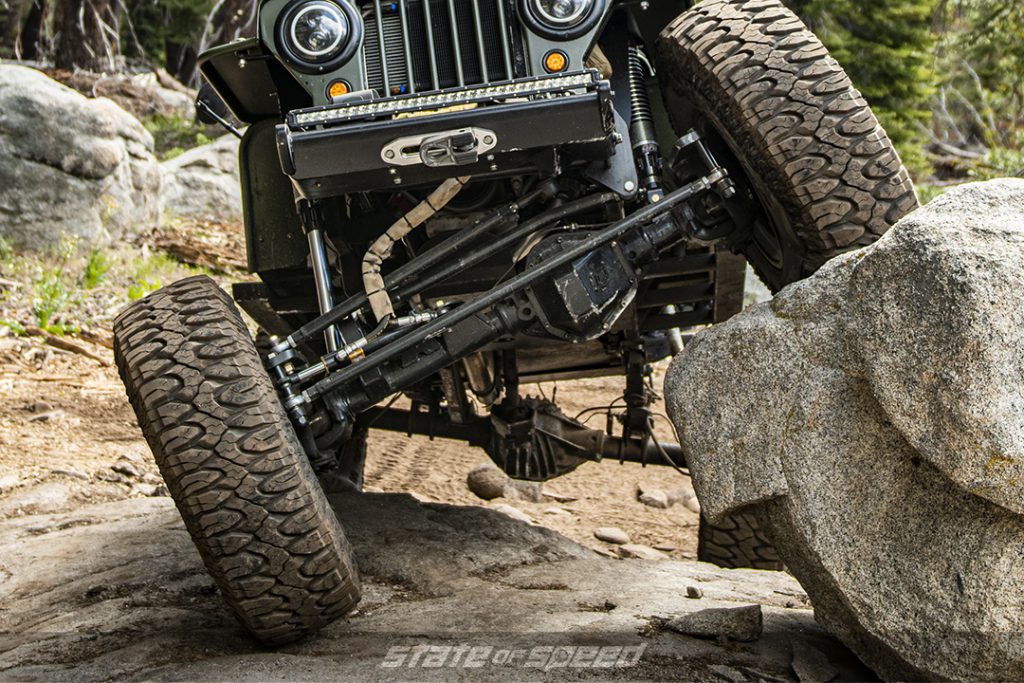
Tires: Milestar Patagonia M/T – 40×13.50R17 LT
Out back a GM Corporate 14-bolt was outfitted with a matching set of 4.88 gears and an ARB air locker before being hung from the existing leaf spring suspension. The current drivetrain package puts the power to the ground through a set of 40×13.5R17 Milestar Patagonia MT tires wrapped securely around a set of 17×9 RBP wheels.When it came time to install a powertrain in the Jeep, Rodney originally chose a GM 4.3L V6 mated to an SM420 manual transmission. While reliable, he soon realized the little V6 just wasn’t going to cut it and it was quickly replaced with a 5.3L GM LS V8 backed by a 4L60 automatic. Finishing out the powertrain is a Dana 300 transfer case that was modified for twin stick control before installation.
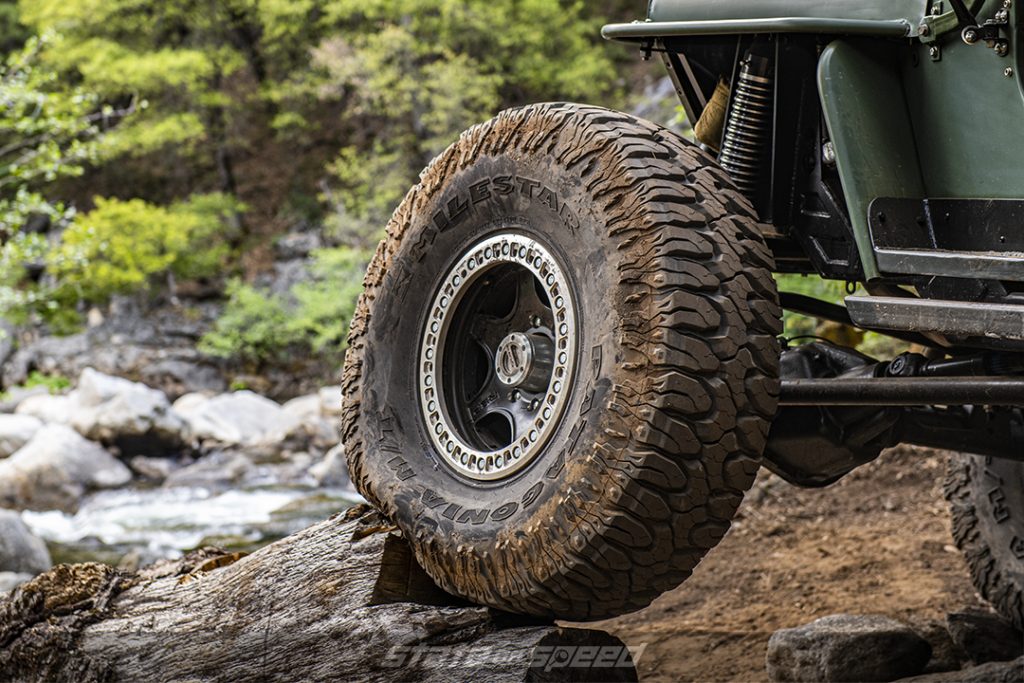
Tires: Milestar Patagonia M/T – 40×13.50R17 LT
One of the most distinguishing features of Rodney’s CJ is the body. While it retains the classic character and good looks of the original design, not much is left that hasn’t been modified. Anyone that has spent time in or around an original flat fender knows they are not known for their room or cargo carrying ability. This fact, combined with the wheelbase stretch prompted Rodney to cut the body and add a new door opening with an additional 9” of length. This still wasn’t enough to even out the proportions of the Jeep, so Rodney cut the body once again, this time behind the door, and added another 7” to the overall length of the tub. All new body panels as well as the floor and firewall were fabricated by Rodney in his home garage utilizing angle iron, c-clamps, and an assortment of hammers to form the replacement panels. The last part of the body to receive his attention was the hood. The installation of the larger V8 engine made it necessary to move the grille further away from the body than the factory design. To accommodate the stretch, Rodney fabricated a hood that was 4” longer than stock. During the fabrication of the hood, a set of custom fenders were incorporated into the design to mimic the iconic flat fender look. With all the modifications done, the body was sprayed with a coat of custom mixed olive-green paint.
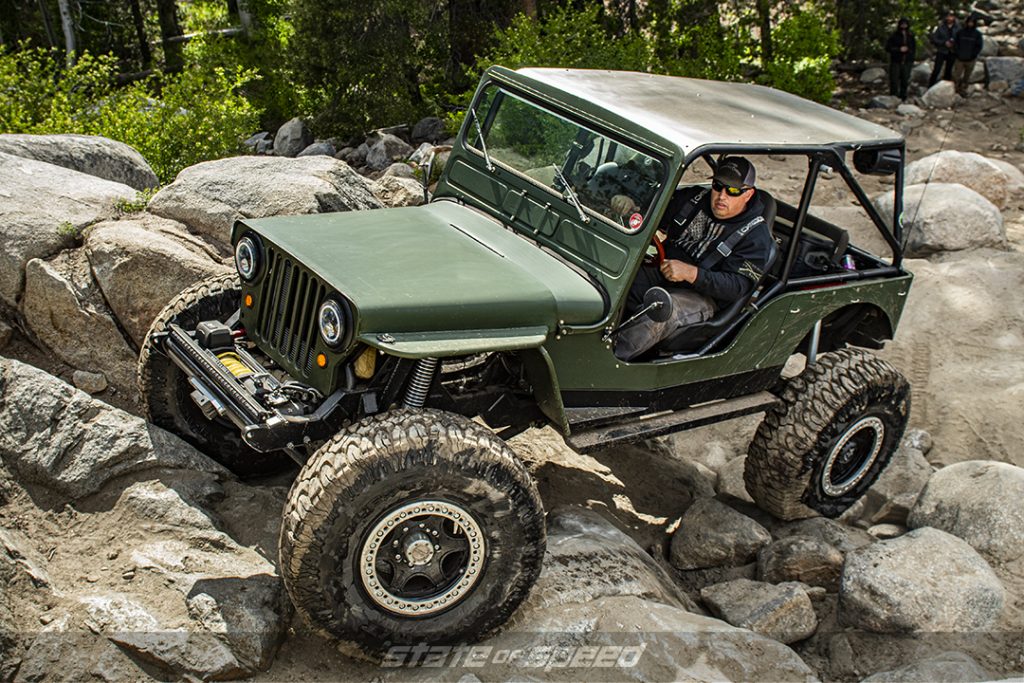
Tires: Milestar Patagonia M/T – 40×13.50R17 LT
…while it retains the classic character and good looks of the original design, not much is left that hasn’t been modified...
…while it retains the classic character and good looks of the original design, not much is left that hasn’t been modified...
After completing the body and drivetrain, Rodney turned his focus to the interior and occupant safety. Starting with a pile of 1.75” .120 wall DOM and a tubing bender, Rodney designed and assembled a stout cage that should not only be safe, it really compliments the lines of the Jeep. Attached securely to the frame, the cage had seat mounts for the Corbeau suspension seats and harnesses incorporated into the design. The finishing touch is a custom canvas top designed, cut, and sewn by Rodney himself using a sewing machine borrowed from his grandmother and receiving instructions from watching You-Tube videos.
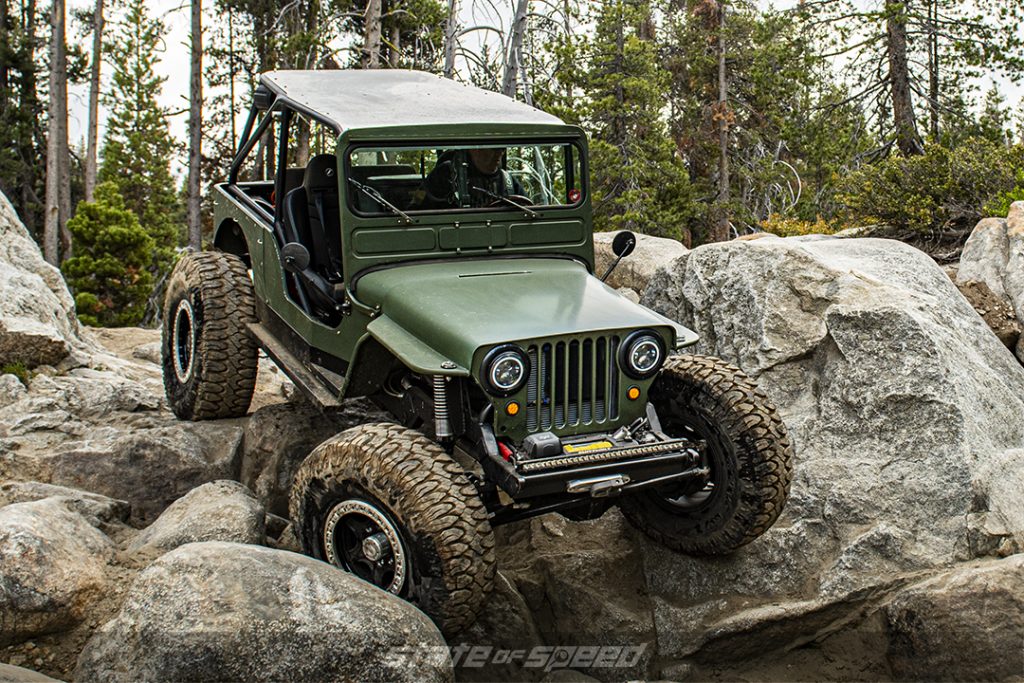
Tires: Milestar Patagonia M/T – 40×13.50R17 LT
Spawned out of strife and forging the foundation of an entire industry, if the LSCJ built by Rodney Hendrix is any indication, the love of the iconic Willys Flat Fender will be alive and well for years to come.


